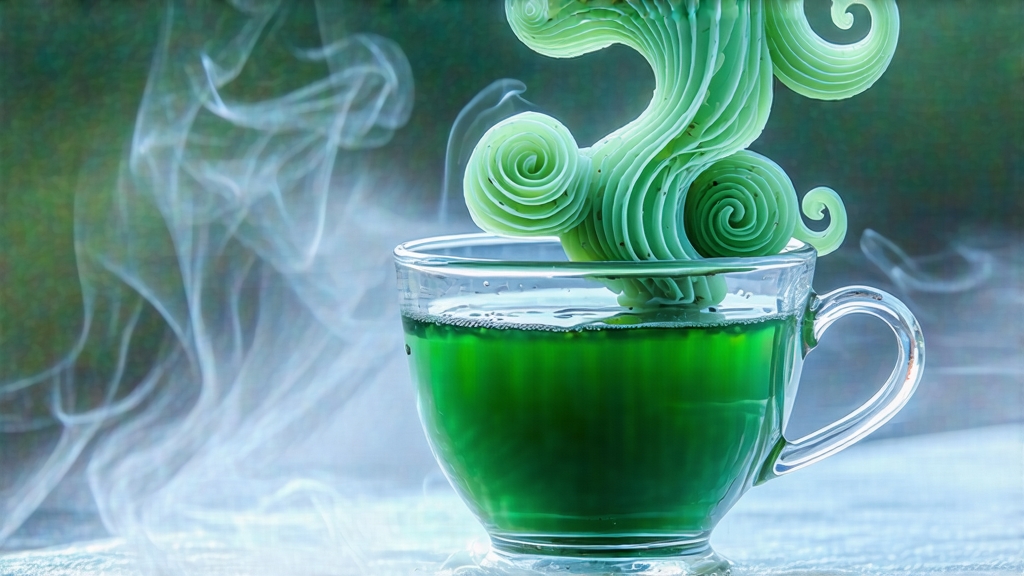
Biluochun, whose name translates literally to “Green Snail Spring,” is one of China’s ten most celebrated teas, yet it remains a delicate secret outside serious connoisseur circles. Grown in the mist-laden microclimate of Dongting Mountain, an island in Taihu Lake near Suzhou, Jiangsu Province, this emerald-green tea has captivated emperors, poets, and farmers for over a thousand years with its unmistakable spiral shape, downy silver tips, and an aroma so fragrant that locals once called it “Scary Fragrance” (Xia Sha Ren Xiang) because even a few leaves could perfume an entire room.
Historical records trace Biluochun’s documented fame to the late Tang dynasty (618-907 CE), when it was offered as tribute tea by the regional governor. The Kangxi Emperor (r. 1661-1722) is said to have renamed it during an inspection tour of the south; struck by the leaf’s resemblance to a tiny green snail and the fact that it was harvested in early spring, he bestowed the poetic name “Biluochun.” Since then, every spring without fail, Suzhou tea makers repeat a ritual that has changed only in its technical precision, not in its soul: plucking the smallest possible bud-and-single-leaf pair at dawn, when mountain mist acts as a natural shade cloth, increasing chlorophyll and amino acids while locking in floral sweetness.
Although all Biluochun comes from the same two mountains—Dongting East and Dongting West—sub-varietals have emerged based on cultivar, elevation, and finishing style. The original heirloom is the “Xiao Ye” (small-leaf) strain, prized for its tiny fish-hook-shaped shoots and intense aromatics. A later selection, “Da Ye” (large-leaf), yields a slightly bolder liquor and is often used for affordable everyday grades. Micro-lots from 300-year-old trees on the cliffside of Biluo Peak are auctioned like Burgundy grand crus; they exhibit a rare lychee-like sweetness attributed to wild fruit trees whose roots intermingle with the tea bushes, a living example of the Chinese concept of “feng wei” (wind flavor), the belief that ambient fruit blossoms permanently influence tea chemistry.
Crafting Biluochun is a race against time and oxidation. Picking begins around Qingming (early April) when the bud is still shorter than 2.5 cm. Leaves are carried in shallow bamboo baskets to prevent bruising and must reach the village wok within three hours. The first step, “sha qing” or kill-green, is done on a cast-iron pan heated to 180 °C. A master fryer tosses 250 g of leaves with bare hands, using only the pressure of fingertips to rupture marginal cells while preserving the central vein. After four minutes the temperature is dropped to 80 °C and the real shaping begins: the tea is rolled into tight spirals through a coiling motion that the locals describe as “push, press, rub, and flick.” One cycle lasts twelve minutes and is repeated three times with intermittent cooling on bamboo trays. The final moisture target is 6–7 %, achieved over a gentle charcoal ember whose heat is moderated by a sheet of yellow paper—an artisanal echo of parchment-thin temperature control.
To unlock the tea’s full potential, water must be soft, low in minerals, and just below boiling. The classic Suzhou method calls for a tall cylindrical glass (250 ml) so that the “tea dance” can be observed: when 80 °C water is poured to one-third height, the spirals hover mid-depth before slowly descending, a phenomenon known as “clouds settling over snow peaks.” Use 3 g of leaf for every 100 ml, steep 90 seconds for the first infusion, adding 30 seconds for each subsequent pour. High-grade Biluochun will yield five aromatic brews; by the third, the liquor turns the color of liquid jade, and a ring of fine white down—evidence of authentic tip content—clings to the glass wall.
Professional tasting follows a three-sip protocol. First sip is taken with lips slightly parted to aspirate the liquor; look for an immediate “gan” or sweet cooling at the back of the throat. Second sip is held for three seconds to evaluate body; top lots feel like light olive oil, coating the tongue without viscosity. The third sip is slurped loudly to atomize the tea across the olfactory epithelium; notes should cascade from fresh snow pea to white